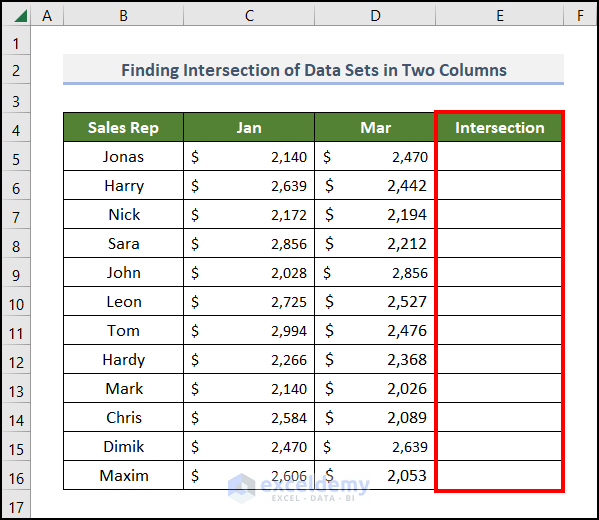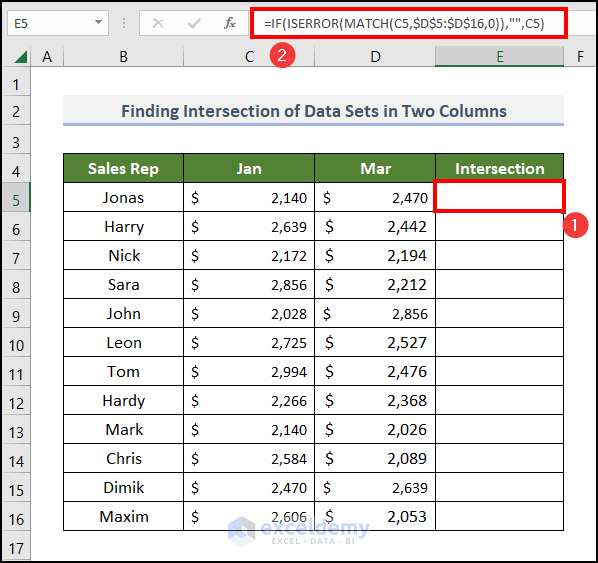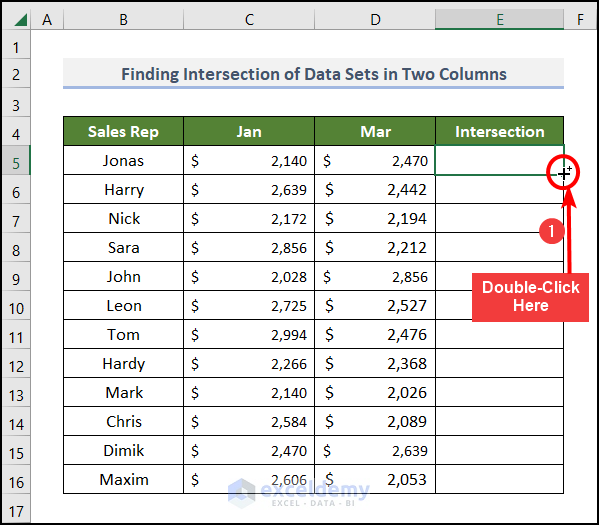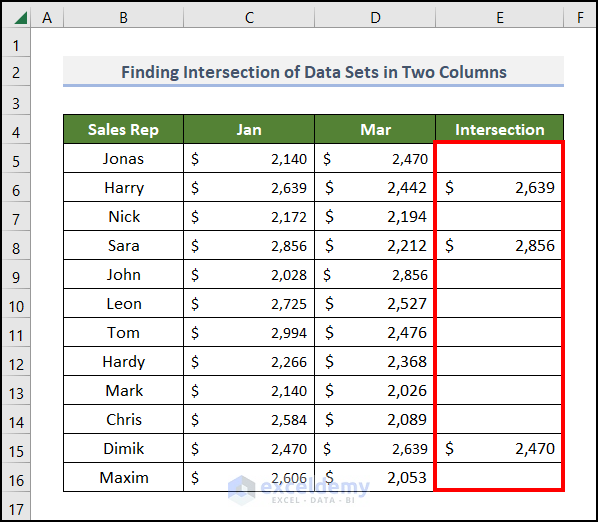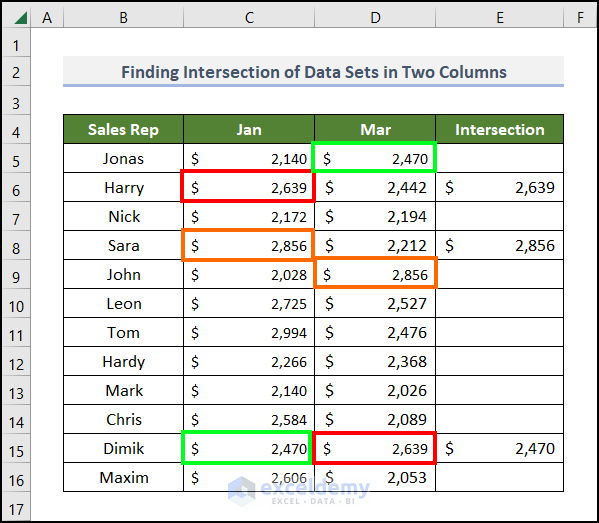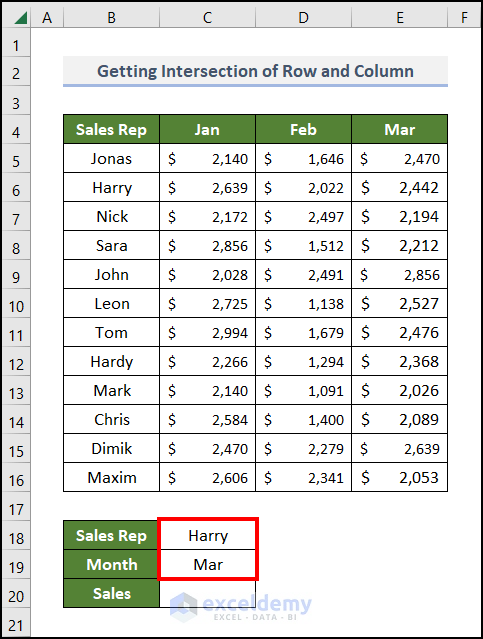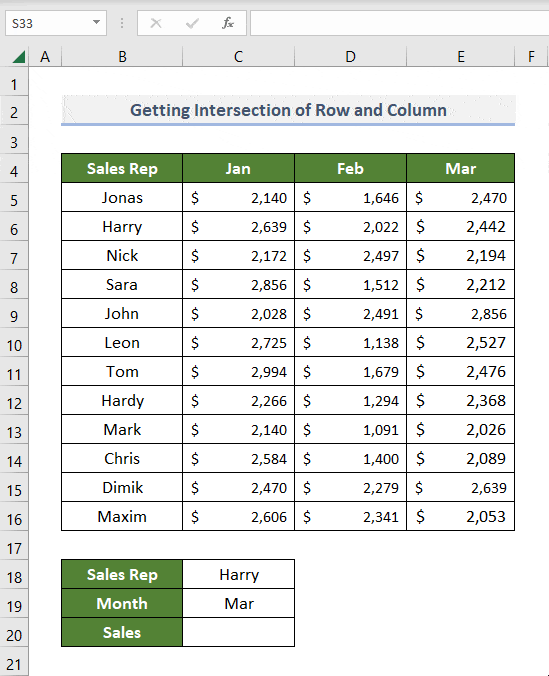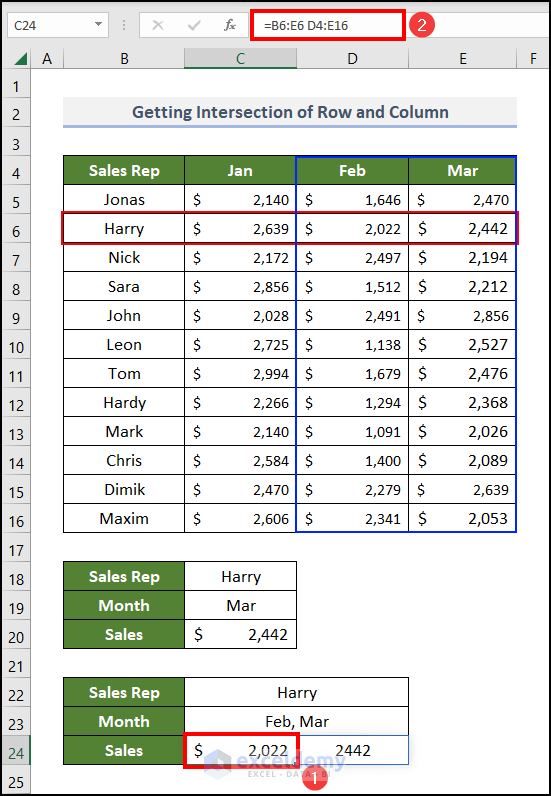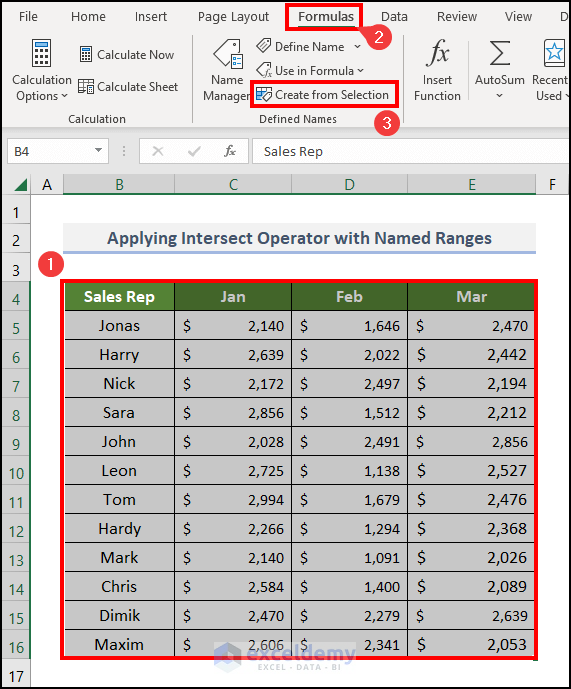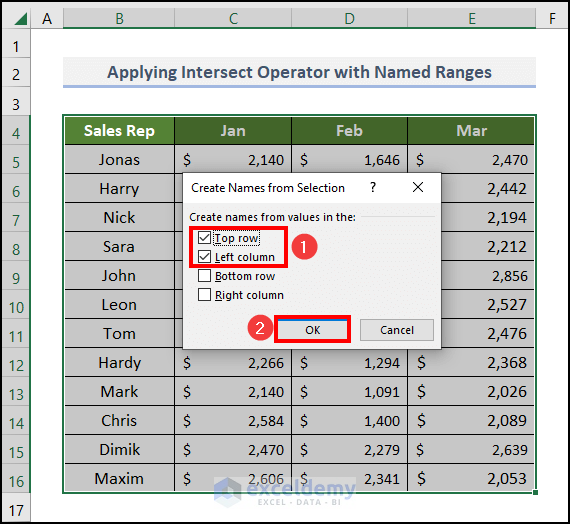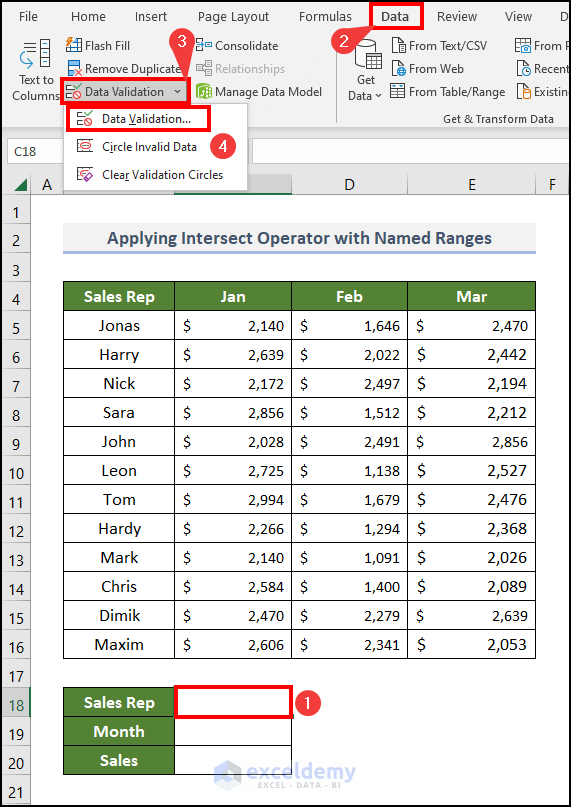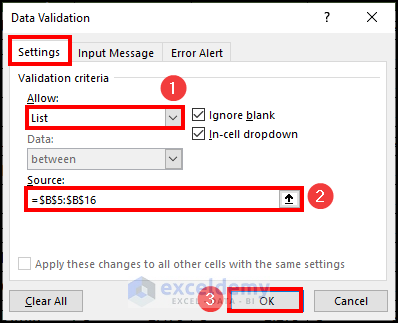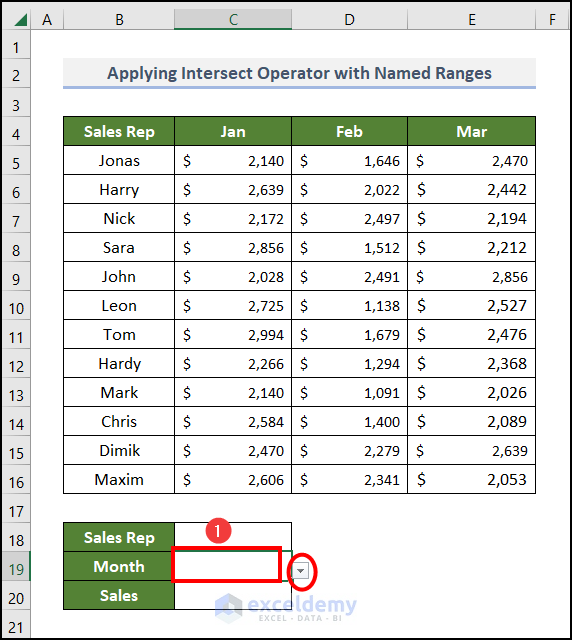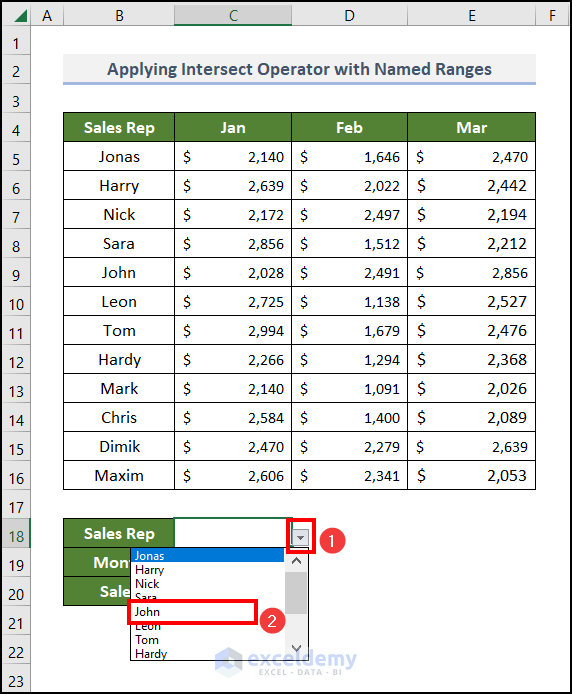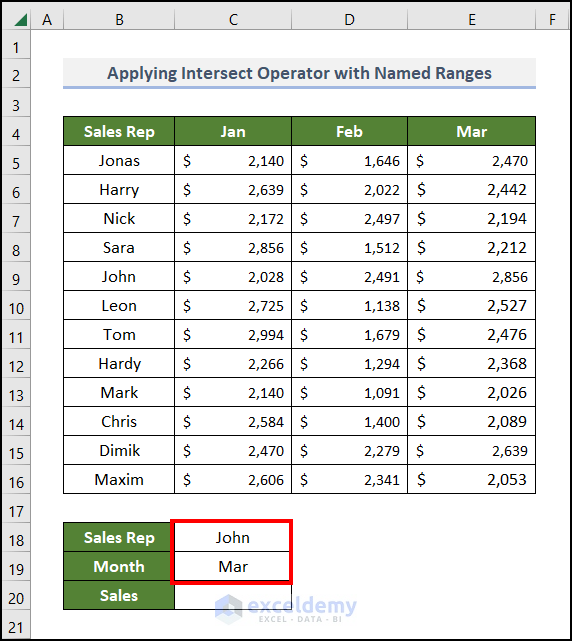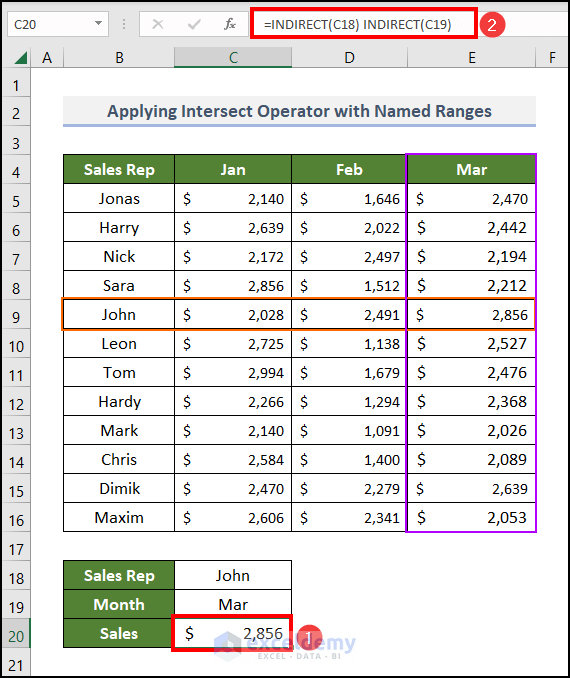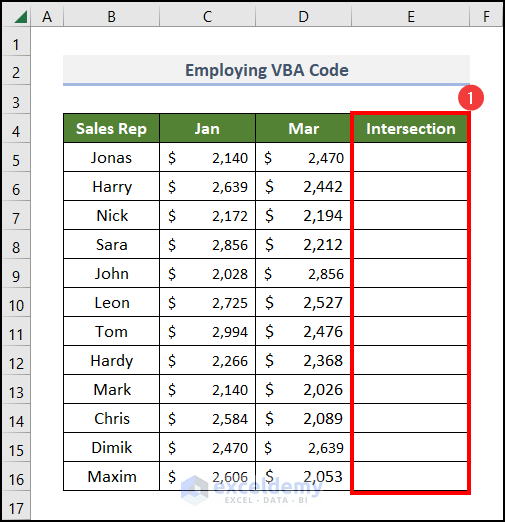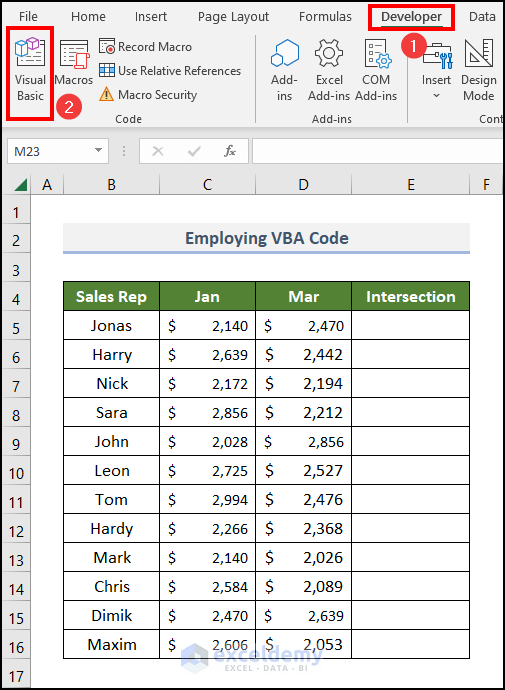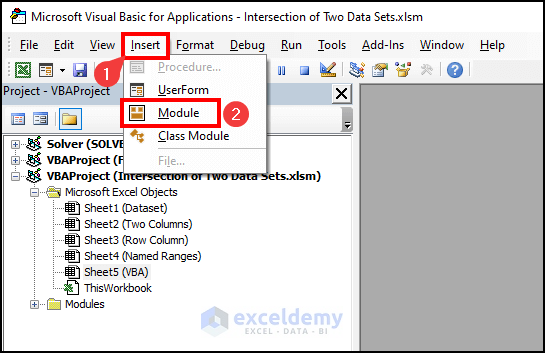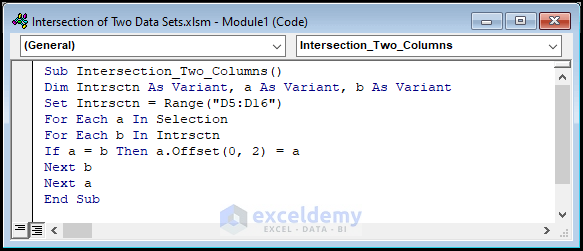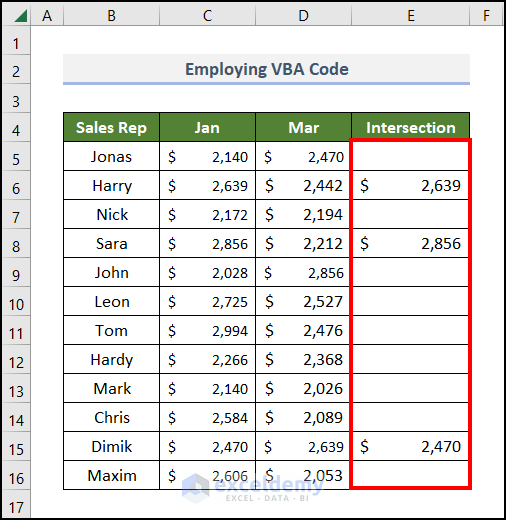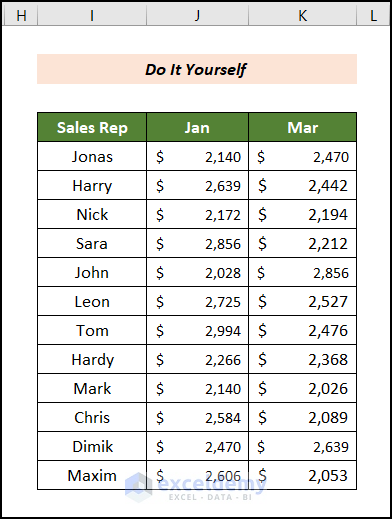Dataset Overview
Let’s dive into the methods for finding the intersection of two data sets in Excel. We’ll use a sample dataset representing Month-wise Sales for Sales Reps. Here are the four methods:
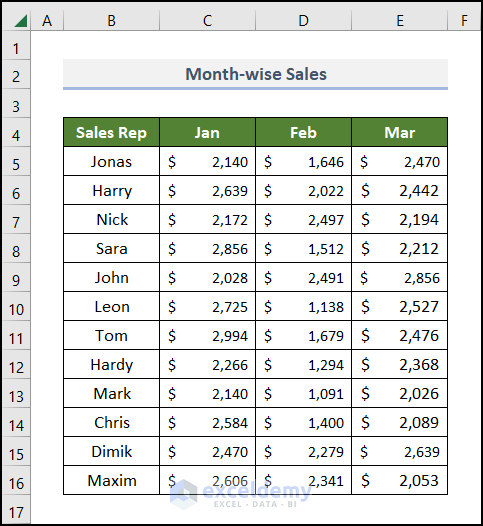
Method 1 – Finding Intersection of Data Sets in Two Columns
Steps
- Create a new column labeled Intersection under Column E.
- In cell E5, use the following formula:
=IF(ISERROR(MATCH(C5,$D$5:$D$16,0)),"",C5)Formula Breakdown
- MATCH(C5,$D$5:$D$16,0) →Returns the relative position of the lookup value.
- Output → #N/A (because the value of cell C5 is not available in the D5:D16 range.)
- ISERROR(MATCH(C5,$D$5:$D$16,0)) → Checks for errors (e.g., if the value in cell C5 is not in the D5:D16 range).
- ISERROR(MATCH(C5,$D$5:$D$16,0)) becomes ISERROR(#N/A).
- Output → TRUE
- IF(ISERROR(MATCH(C5,$D$5:$D$16,0)),””,C5) becomes IF(TRUE,””,C5). IF function applies a logical concept.
- Output → (blank space)
- Press ENTER.
- Double-click the Fill Handle tool (the plus sign at the right-bottom corner of cell E5) to copy the formula to lower cells.
- The Intersection column will contain values available in both columns C and D.
Read More: Intersection of Two Columns in Excel
Method 2 – Getting Intersection of Row and Column in Excel
Steps
- In cells C18 and C19, provide a random name for the Sales Rep and Month.
- To find Harry’s sales amount in March, select cell C20 and paste the formula:
-
- This formula calculates the intersection of row 6 (Harry) and column E (March).
- Press ENTER.
- Similarly, you can find sales amounts for the same Sales Rep in February and March using the formula:
-
- Adjust the row and column references as needed.
Read More: How to Use Intersection Operator in Excel
Method 3 – Applying Intersect Operator with Named Ranges
Steps
- Highlight the entire dataset in the B4:E16 range.
- Navigate to the Formulas tab.
- Click on Create from Selection.
- In the Create Names from Selection dialog box, check the boxes for Top row and Left column, then click OK.
- Now, the columns and rows have their respective names.
- Enlist the names of Sales Reps and Months in cells C18 and C19, respectively, using Data Validation:
- Go to cell C18.
- Proceed to the Data tab.
- Click on the Data Validation drop-down on the Data Tools group.
- Select the Data Validation option from the list.
- In the Allow box, select List.
- In the Source box, reference the B5:B16 range.
- Click OK.
- Repeat the same process for cell C19. Use the down arrow beside these two cells when you click on the cells.
- lick on the arrow beside cell C18, and from the list, select John.
- Choose Mar in cell C19.
- In cell C20, enter the following formula:
=INDIRECT(C18) INDIRECT(C19)-
- The INDIRECT function returns the cell reference of the argument value.
- Press ENTER.
Method 4 – Employing VBA Code
Steps
- Create a column with the heading Intersection under Column E (similar to Method 1).
- Go to the Developer tab and click on Visual Basic in the Code group.
- In the Microsoft Visual Basic for Applications window, go to the Insert tab and select Module.
- Paste the following code into the module:
Sub Intersection_Two_Columns()
Dim Intrsctn As Variant, a As Variant, b As Variant
Set Intrsctn = Range("D5:D16")
For Each a In Selection
For Each b In Intrsctn
If a = b Then a.Offset(0, 2) = a
Next b
Next a
End Sub- Save the file as a macro-enabled workbook.
- Select cells in the C5:C16 range (sales in Jan month).
- Navigate to the Developer tab and click on Macros.
- In the Macro dialog box:
- Select the Intersection_Two_Columns macro in the Macro name box.
- Click the Run button.
- The output will be the same as Method 1.
Practice Section
To practice on your own, you’ll find a Practice section similar to the one below on each sheet to the right. Feel free to work through the exercises there.
You can download the practice workbook from here:
<< Go Back to Excel Operators | Excel Formulas | Learn Excel
Get FREE Advanced Excel Exercises with Solutions!